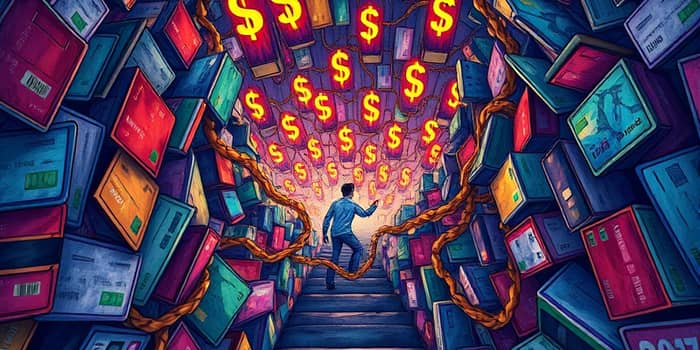
At first glance, making just the minimum payment on a credit card can feel like a manageable way to stay current.
However, this small action masks a powerful financial trap that silently drains your resources.
Understanding why minimum payments are so perilous is the first step toward taking back control of your finances.
Minimum payments represent the smallest amount you must pay each billing cycle to avoid default.
The issuer sets this requirement to avoid late fees and penalties, ensuring you remain in good standing.
While it prevents immediate consequences, it does nothing to stop interest from piling up on your balance.
Credit card companies use one of several approaches to determine your monthly minimum payment.
For example, on a $1,500 balance with a 2% requirement, your minimum payment would be $30 for that month.
Economic pressures and shifting lending practices have driven more consumers to make only minimum payments.
In 2025, a record 22% of cardholders are paying only the minimum, and 46% carry a balance at least once each year.
Lower-income households are particularly affected, with just 37% able to cover a single large purchase in late 2024.
Opting to pay only the minimum can dramatically extends debt timelines and skyrocket total interest costs.
On a $1,250 balance, a $25 monthly payment at a 21% APR would take 530 months (over 44 years) to pay off and incur more than $97,000 in interest.
On an $80,000 balance, making only minimum payments could stretch repayment beyond 100 years, effectively trapping you forever.
By increasing your payment by just $200 per month, you could cut the payoff timeline to 134 months and reduce interest to about $45,000.
High APRs and compounding interest keep balances growing if you only pay the bare minimum.
This snowball effect leaves you paying interest on interest, making it harder to chip away at the principal.
The mental toll of prolonged debt hampers mental health, fueling stress and undermining your financial well-being.
Breaking free requires intentional action and a shift in mindset.
Use budgeting tools, negotiate lower interest rates, and make a plan to break free from long term debt.
Every extra dollar you pay now speeds up your journey to financial freedom, reduces stress, and builds a stronger credit future.
Stop playing a dangerous game with minimum payments—take control of your debt and reclaim your peace of mind today.
References













